You owe it to yourself to choose the best headphones possible. Ask yourself the last time you left the house without headphones, and you might be stumped. The advent of easy streaming on smartphones, incredibly cheap unlimited data packages and the abundance of true wireless headphones have meant that music, podcasts, and movies on the go are readily accessible luxuries that we all take advantage of daily. With such a prevalence of audio in our lives, it's only right that we want to have the best quality experience possible.
Additionally, the prevalence of excellent headphones means we can soundtrack our lives, framing the day and our activities to fit our tastes. Working in a loud office is no longer an issue – simply slip on a set of noise-cancelling earphones, and you’re in your own world. Likewise, exercise – gym-based or out in the wild – is vastly improved by a pumping playlist delivered via your bass-laden wireless earbuds.
The best headphones at a glance:
• Best overall: Anker Space One Pro – View on Amazon
• Best headphones: Sony WH-1000XM5 – View on Amazon
• Best earphones: Samsung Galaxy Buds2 Pro – View on Amazon
• Best earbuds for the gym: Jabra Elite 7 Active In-Ear Bluetooth Earbuds – View on Amazon
• Best for swimming: Shokz OpenSwim Pro – View on Amazon
With these little audio delights joining you in almost every area of your life, you must purchase the best headphones your budget will allow. Much like a smartphone, wallet or watch, a good set of headphones is an essential item in your daily ensemble. Because of this, you need to ensure that your new headphones deliver on all required fronts – not only in quality audio but battery life and durability. If you make the decision now, you’re saving yourself a lot of headaches (and cash).

At What’s The Best, we’ve been getting hands-on and reviewing headphones, earphones, and earbuds to see which options make the cut. Our in-house reviewers, including William Lobley, Curtis Moldrich, Ryan Gilmore and Ryan Houghton, have been trialling audio products for many years. From assessing sound quality and noise-cancelling to touch controls and battery life, our experts' headphone recommendations have all been adopted into our lives and thoroughly trailed. If we wouldn't buy it, we don't recommend it. Below, you will find the best headphones available in 2024.
The best headphones of 2024:
All prices are correct at the time of writing. Prices, stock and deals are subject to change without notice.
Best overall
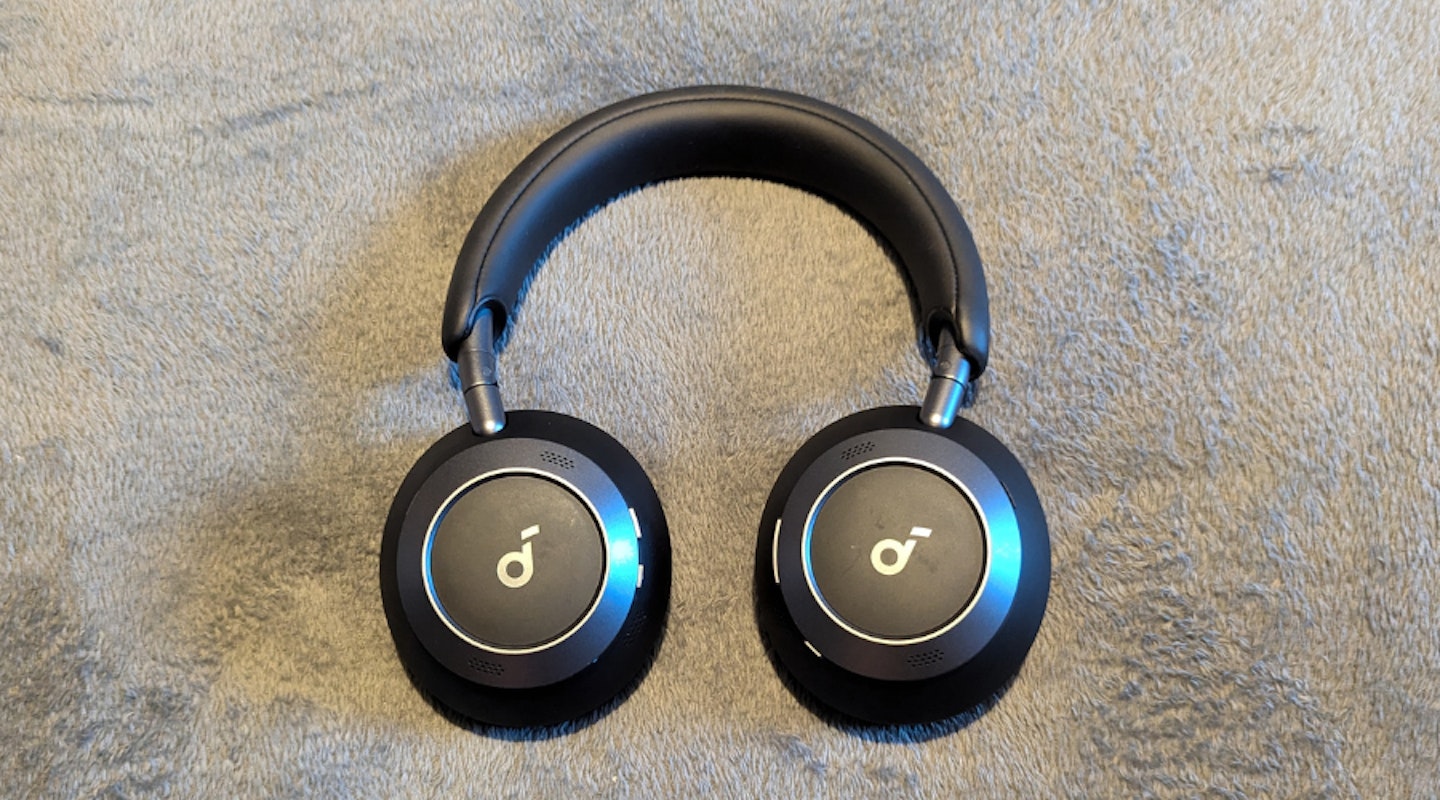 Kyle Purves, What's The Best
Kyle Purves, What's The BestFor overall excellence across the board, you can't go wrong with the Anker Soundcore Space One Pro. It sounds incredible, and coupled with the active noise cancellation, you can easily be immersed in what you're listening to. Depending on whether the notice cancellation is nelabed or not, the playtime can last between 40 to 60 hours, which is fantastic and sure to last most of a week.
One of our tech writers, Kyle Purves, reviewed the Space One Pro and had this to say – "Anker and its Soundcore range tend to sport excellent, well-balanced drivers, and I'm happy to say that the Space One Pro continues this trend. The 40mm drivers are superb and produce rich and clear audio. There's minimal distortion, so whether you're listening to movie dialogue or your preferred music genre, you get an enhanced hi-fi experience.
"When testing audio products, I always like to experiment with bassy music, and the Pro is equipped to handle it. It was very easy to listen out for and pick up distinct bass lines. In fact, from jazz to metal and beyond, the Space One Pro excelled at every genre I threw at it. Going forward, I imagine myself using this as my go-to pair of headphones for appreciating music."
Pros
- Consistently brilliant noise cancellation
- Astounding battery life
- Efficient and speedy charging
Cons
- Button delay is a touch too long
| Drivers | 40mm drivers |
| Connection | Bluetooth, audio jack |
| Playtime | 40 to 60 hours |
| Charging time | Approx. 5 minutes = 8 hours |
| Weight | 272g |
Best over-ear headphones
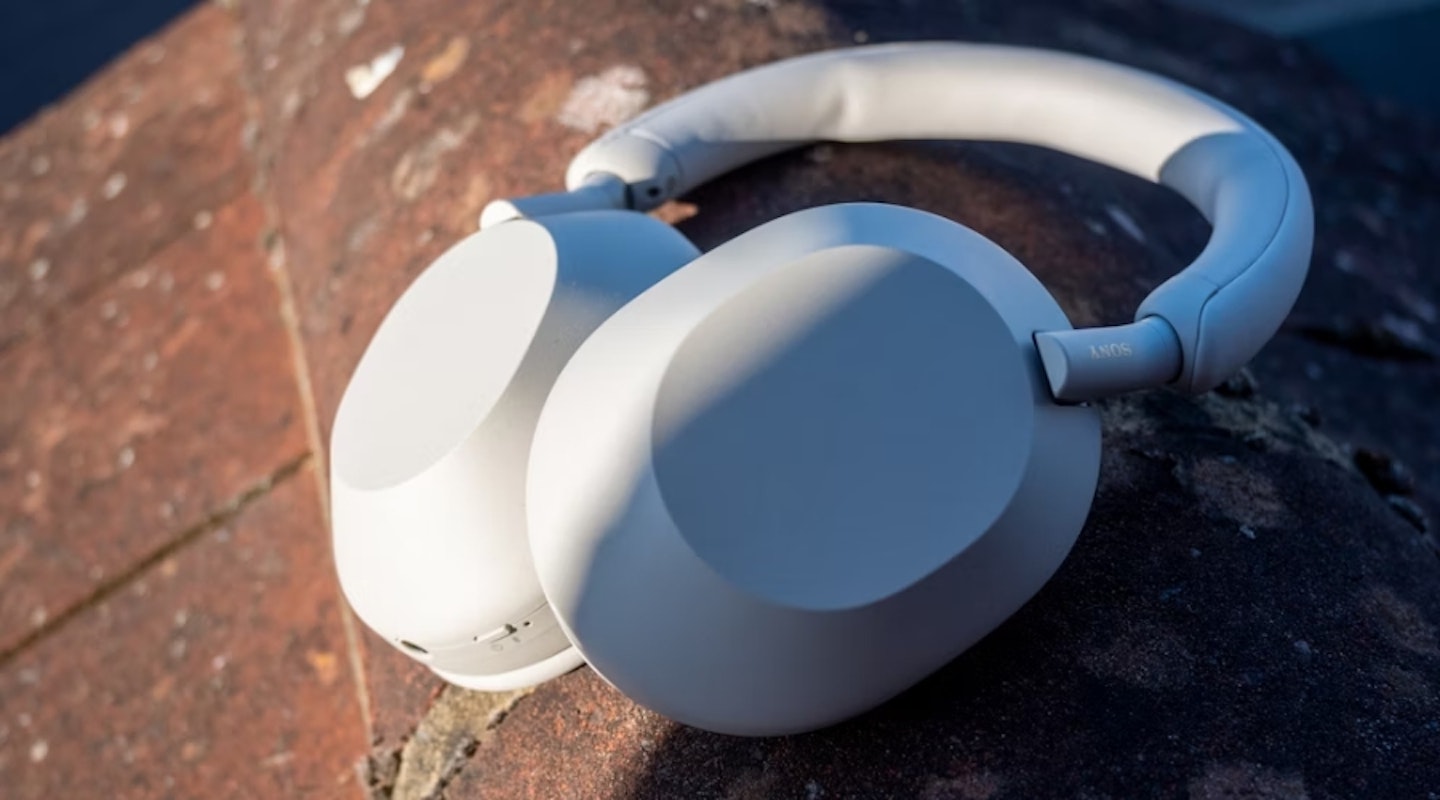 William Austin-Lobley - What's the Best
William Austin-Lobley - What's the BestThe Sony WH-1000XM5 are the latest in a lineage of best-selling, top-ranking headphones. It could’ve been easy for Sony to rest on its laurels and churn out a minor upgrade to its established winning formula. Instead, it decided to mix things up – and to great effect.
The WH-1000XM5 have new audio drivers, producing a beautiful sound that will delight all listeners. In our review, we tested the headphones with everything from cheesy pop to death metal – the XM5s handled them all without fault. Topping this off, the noise-cancellation is immensely accomplished, keeping the world at bay while you work and play.
Additional features include an array of microphones dedicated to sending your voice through clearly on calls, a responsive touchpad for easy control, speak-to-chat, smart assistant support, and Spotify Quick-Access. The smartphone app is a doddle to install and use, and the 30-hour battery never disappoints – but if it does, the USB-C quick charging will have you back up and running in no time.
As of 2024, these are the best Sony headphones available. Period.
What's The Best's Editor, William Austin-Lobley, said this: "The physical style of the headphones and the additional features that Sony packed into these headphones is excellent. But given that headphones deliver audio, these are only part of the equation. If the sound isn’t good, the headphones aren’t worth jack. Gladly, this isn’t the case. The sound quality the XM5 produces is excellent – no doubt thanks to the high-resolution audio decoding found onboard - and without wires, handily (note that you'll need a service that provides hi-res streaming to get the most from this tech)."
Read our full Sony WH-1000XM5 review.
Pros
- Brilliant audio performance
- Comfortable all day long
- Excellent noise cancellation
Cons
- Price challenged by the XM4s
| Battery life | Up to 30hrs |
| Charging | USB-C, 3.5hrs to full |
| Connection | Bluetooth 5.2, USB-C, Aux |
| Weight | 250g |
Best earbuds
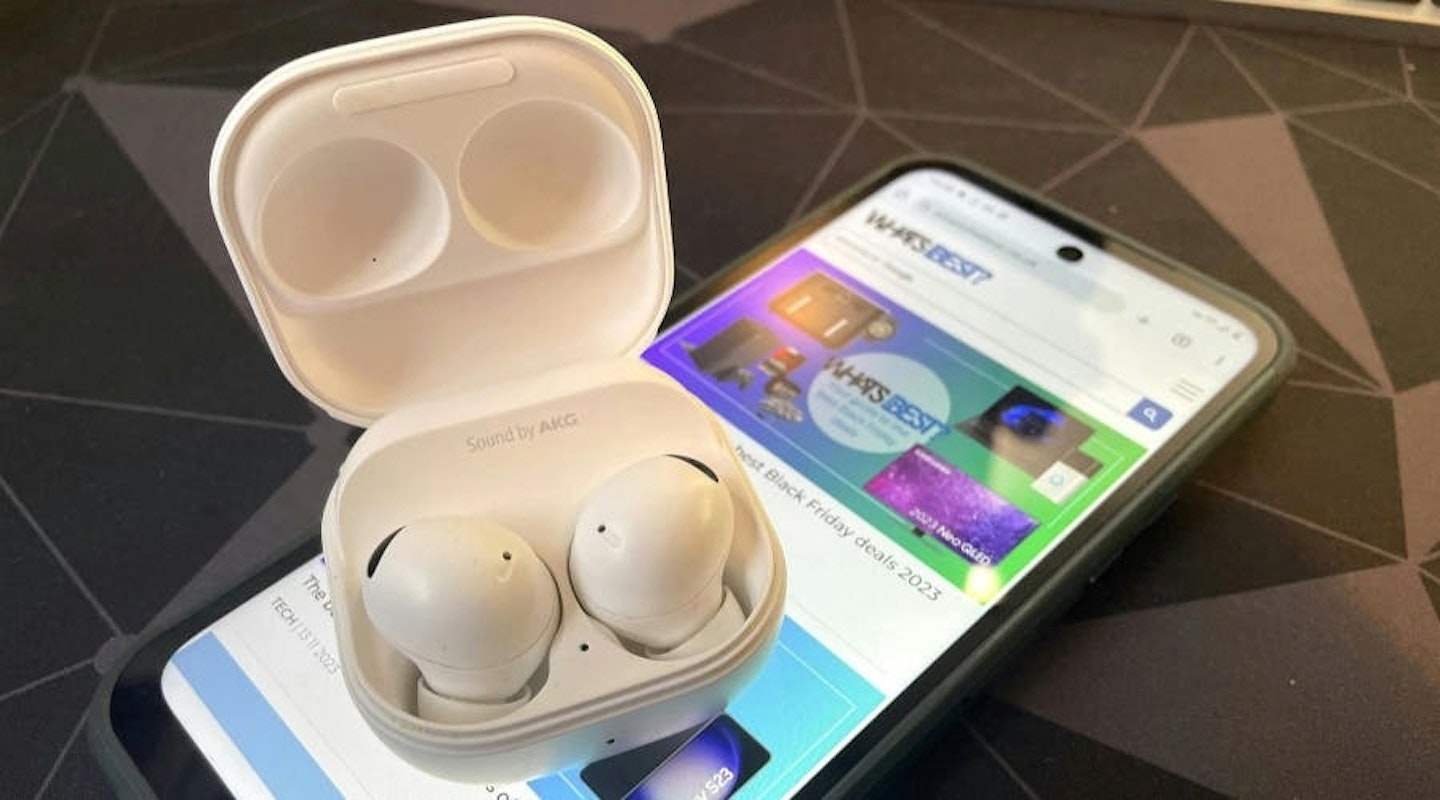 William Austin-Lobley/WTB
William Austin-Lobley/WTBThe Samsung Galaxy Buds2 Pro are, without question, the best in-ear headphones we have tested. The bold but unobtrusive design sits comfortably and firmly in the ear, allowing you to go about your daily tasks without worry – whether you’re working at a desk or working up a sweat in the gym. The outer shell of the earbud has reliable touch controls, allowing you to pause music or change noise-cancelling modes with ease.
The Bluetooth signal is as strong as you’ll find anywhere on the market. This connection can zip a good amount of data through to the Buds2 24-bit decoder, which is good news for anyone using lossless streaming services like Tidal or Apple Music.
Whether lossless or not, the audio quality produced by Samsung’s earbuds is staggering. The internal drivers, including a tweeter and a woofer, have all audio frequencies covered. Whatever you’re doing, wherever you are, the Buds2 Pro will put a bounce in your step.
William Austin-Lobley tested them and said this: "The physical style of the headphones and the additional features that Sony packed into these headphones is excellent. But given that headphones deliver audio, these are only part of the equation. If the sound isn’t good, the headphones aren’t worth jack. Gladly, this isn’t the case. The sound quality the XM5 produces is excellent – no doubt thanks to the high-resolution audio decoding found onboard - and without wires, handily (note that you'll need a service that provides hi-res streaming to get the most from this tech)."
Read our full Samsung Galaxy Buds2 Pro review.
Pros
- Clear and energetic audio
- Accomplished noise cancelling
- Perfect for exercise
Cons
- Not a clear enough warning before the battery runs out
| Battery life | 8hrs plus 30hrs case |
| Charging | USB-C, 10mins for 150mins playback |
| Connection | Bluetooth 5.3 |
| Weight | 5.5g each |
Best earbuds for gym
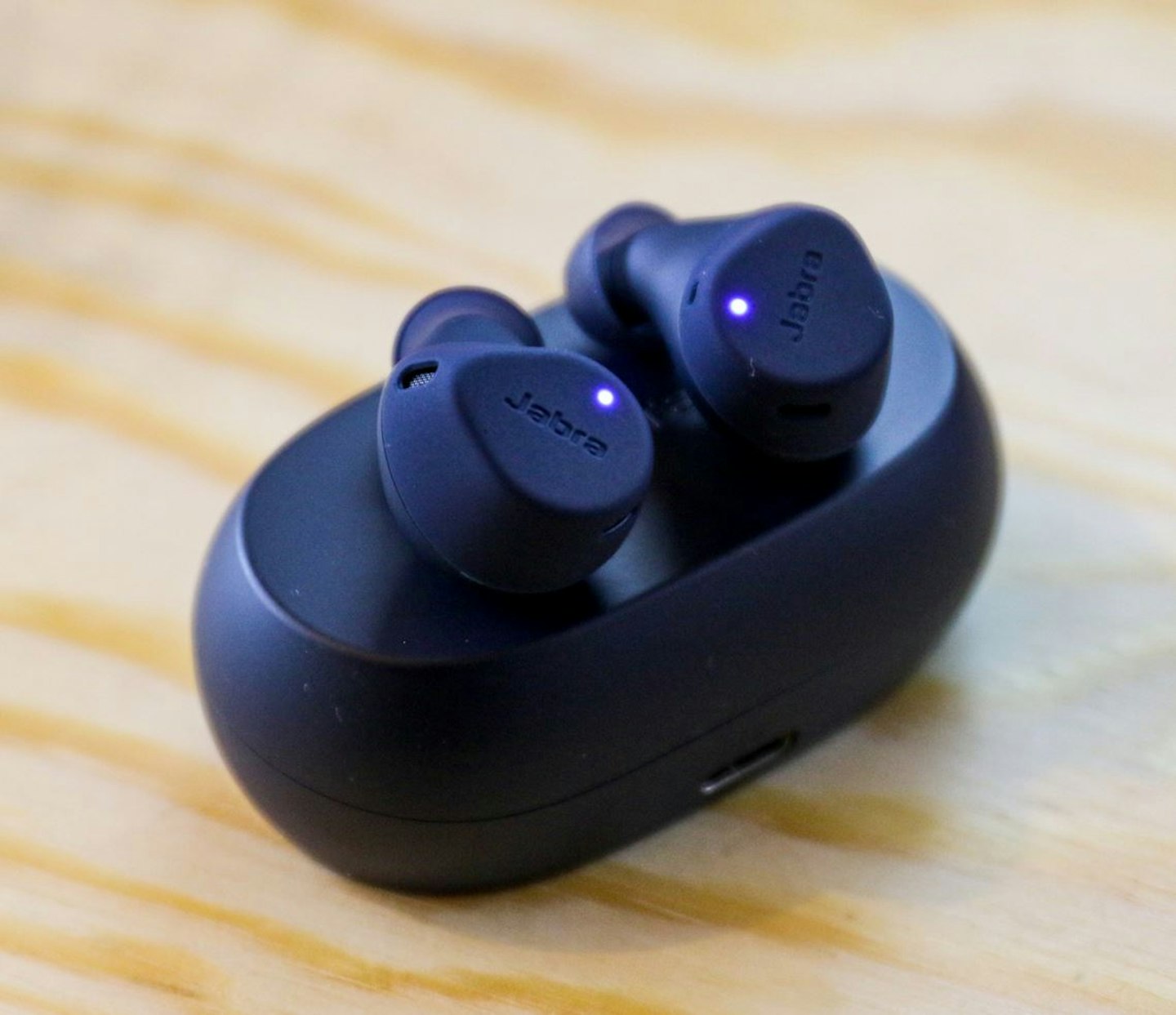
Basically a gripper version of the Jabra Elite 7 Pro but missing the bone-conducting voice call technology, so if you spend more time in the gym than the office these are the earbuds for you.
ShakeGrip technology is a silicon rubber coating that ensures wobble-free fitment whether you're lifting weights or running on a treadmill, and the IP57 dust and water rating means you don't need to worry about sweat.
Best of all they sound absolutely brilliant and last eight hours between charges, with active noise cancellation that can block out all but the loudest sounds.
Adam Binnie was impressed: "The active noise cancellation is really powerful and rivals some over-ear headphones I’ve tried. The Jabra app allows you to tailor the level that is best for you, and there’s also a HearThrough mode so you can retain situational awareness. Useful when running or riding near traffic. The sound is absolutely brilliant – so rich and deep despite originating from a small 6mm source. These earbuds have the sound quality to rival a pair of over-ears, and that is very impressive."
Read Adam's full Jabra Elite 7 Active review.
Pros
- Sounds great
- Doesn't fall out
- Battery lasts ages
Cons
- Find my Jabra app could be better
- As could noise cancellation on calls
| Speaker size | 6mm |
| Noise cancelling | ANC and HearThrough |
| Battery life | 8 hours |
| Connectivity | Bluetooth 5.2 |
| Earbud weight | 5.5g each |
| IP rating | IP57 |
Best for swimming
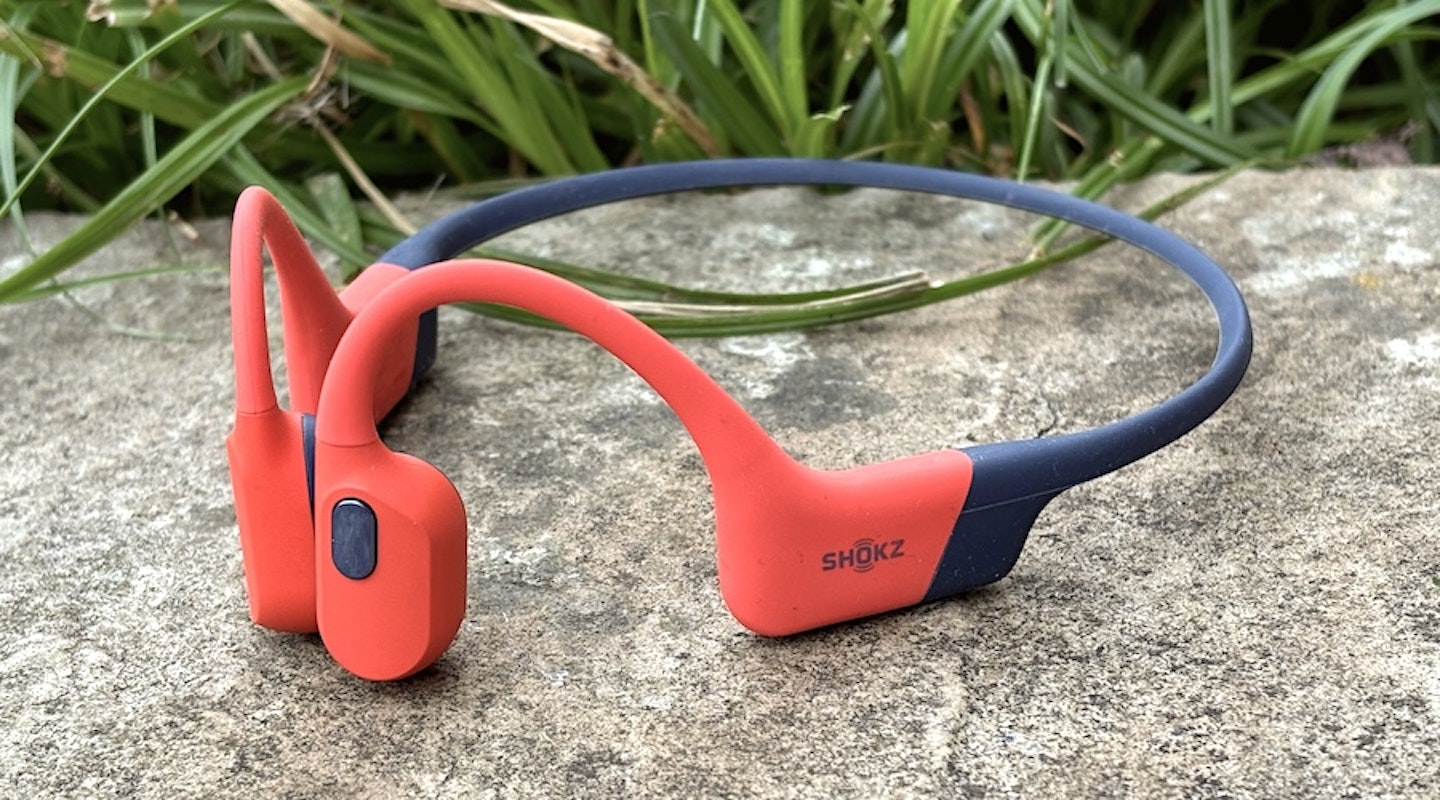 What's The Best / William Austin-Lobley
What's The Best / William Austin-Lobley With an IP68 waterproof rating and onboard music storage, the Shokz OpenSwim Pro headphones are the go-to choice for watersports, swimming and triathlons. The driver technology is the same as you will find in the OpenMove, and it's good news if you like to swim with earplugs in – because the bone-conduction technology works on vibrations that stimulate your inner ears, you can hear them without issue – in fact, you might notice a bump in bass performance.
The 32GB onboard memory can store 8,000 songs in MP3, WAV, WMA, AAC, and FLAC formats. The battery life is nine hours when listening through the Bluetooth connection and six hours when using MP3 mode.
The Shokz OpenSwim Pro were reviewed by William Austin-Lobley, who praised them:
"The OpenSwim Pro has really upped the game from the non-Pro version – which doesn't have Bluetooth. I enjoy the Bluetooth connectivity, making it feel like a better fit for running and cycling, where, being out of the water, it's easier to stream music from a phone or smartwatch. The ability to switch quickly between Bluetooth and stored music at the touch of a button is excellent news for anyone doing some back-to-back training, too."
Pros
- Quality audio performance
- Nine hours in Bluetooth mode with faster 1.5-hour quick charging
- Vastly improved MP3 storage, only 27g and fully waterproof
Cons
- Only six hours in MP3 mode, compared to eight hours in the original model
- No music organising in smartphone app
| Drivers: | 8 hours |
| Output power: | 1.5 hours |
| Frequency range: | IP68 (Waterproof) |
| Connectivity: | Internal music store only |
| Battery life: | Up to eight hours |
| Charging time: | Approximately two hours |
| Waterproofing: | IP68 |
| Dimensions: | Not specified |
| Weight: | 30 g |
Best earbuds runner-up
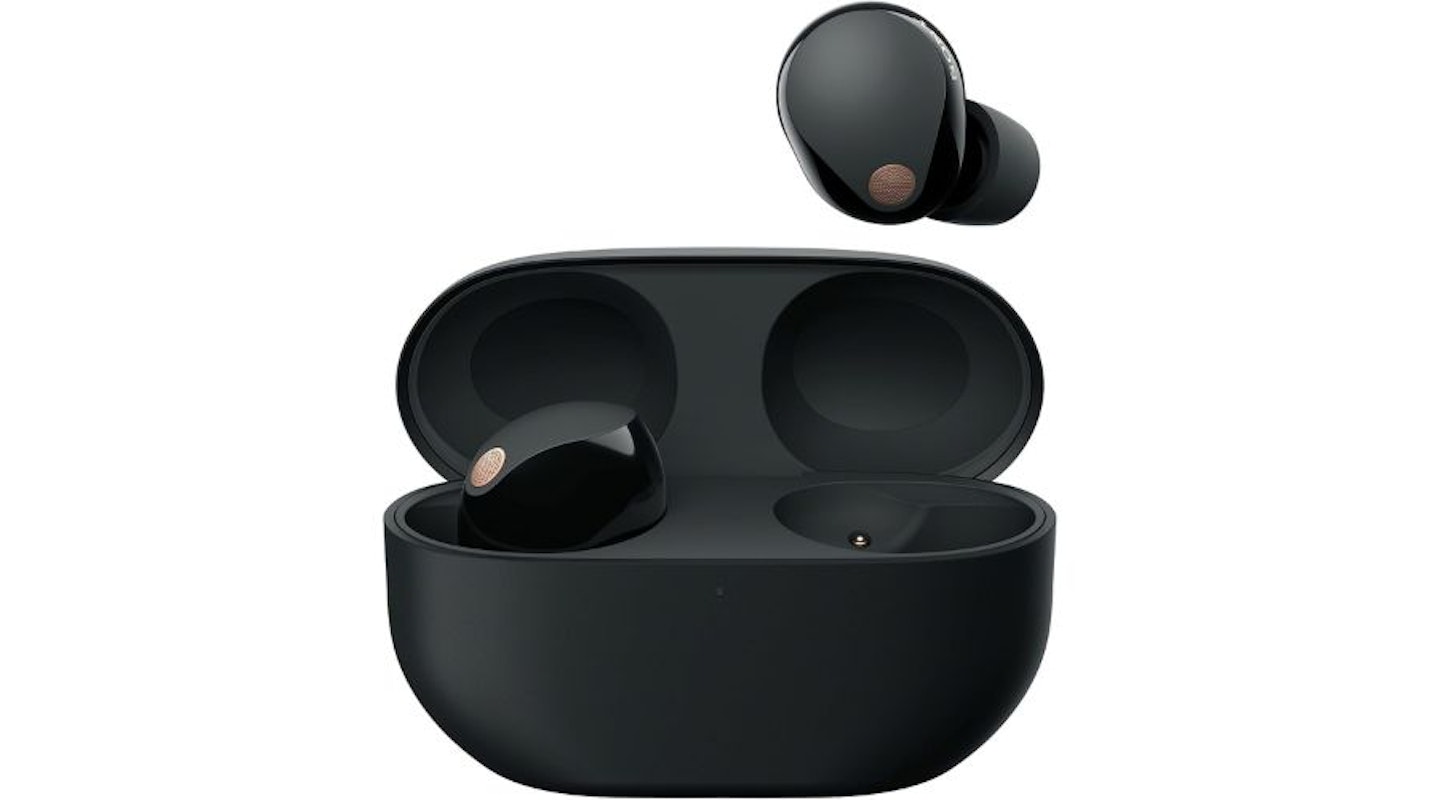 Sony
SonySony’s current flagship WF-1000XM5 wireless earbuds earn a spot on this list, thanks to superb noise cancellation, great sound, and impressive battery life. These are some of the best earbuds out there at the moment.
These earbuds have larger drivers than on their predecessors – the excellent Sony WF-1000XM4 – making them 25 per cent smaller and considerably lighter. It's also one of the reasons why the sound quality is so good. Noise cancellation is also great, although not quite best in class. They also support Sony's LDAC codec, which allows the highest possible audio quality from supported sources. Batteries last for up to eight hours with noise cancelling activated, 12 without, and up to 24 hours when using the charging case.
There are a few other features to help these stand out from the crowd. Instant Bluetooth pairing for Android and Windows devices, plus a button on the case for pairing to Apple products, making it nice and easy to connect to your devices. They also allow you to connect to two devices at once thanks to Multipoint Bluetooth – this means you can watch a movie on your laptop, for example while also being ready to answer a phone call. Call quality is also great thanks to noise reduction and bone conduction sensors.
Given they are quite small, it does mean that some people may find a slight issue with how well they fit (although some people will benefit from this). Overall, these are a fantastic pair of earbuds.
Pros
- Quality audio
- Excellent noise cancelling
- Good battery life
Cons
- Smaller size may not fit securely for some people
| Battery life | 8 hours plus 16 hours case |
| Charging | USB-C, 3.5hrs to full |
| Connection | Bluetooth 5.3 |
| Weight | 5.9 grams each |
Best earbuds under £180
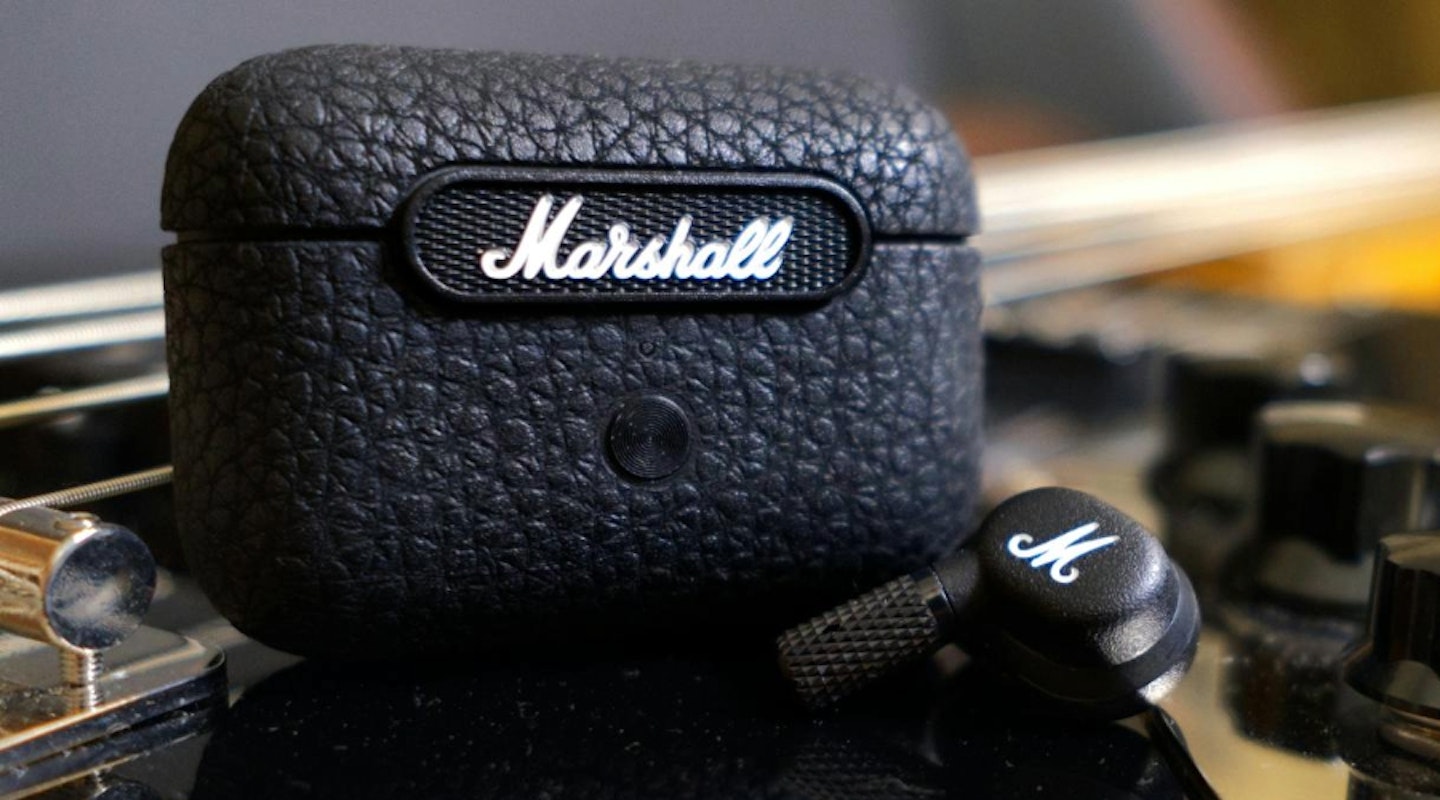
Marshall has an audio pedigree that can’t be faked. From Jimi Hendrix to Oasis, Motorhead to Fall Out Boy, the Milton Keynes-based company has shared the stage with some of the world’s best-known rock outfits. This means there are no prizes for guessing which genre the Marshall Motif earphones perform well on – but these offer more than just crisp, crunchy, and heavy tones.
The quality of the speaker drivers by the Motif means that any music genre will be well served. Likewise, the additional features carried by the earphones are what you would expect, with decent noise cancellation, smart assistant support and touch controls.
Where it drops a few points is in battery life – 4.5 hours with ANC on, extending to six with ANC off – and the support app, which frankly sucks. Nevertheless, we gave Motif top marks in our review, despite these flaws – that’s how good they sound.
Here's a teaser from our full Marshall Motif review: "Listening through a mix of genres you soon realise that the Motifs never miss a beat. The music of J Dilla and MF DOOM is given just as much respect as Herbie Hancock and John Coltrane - it’s all down to the organic balance of the Motif’s drivers. The performance on distorted guitar-led music is undoubtedly the highlight, though. It’s a real treat to encounter, as many mainstream earphones struggle with the dynamics of rock music."
Pros
- Excellent audio, especially for guitar-led genres
- Killer aesthetics
- Good touch controls
Cons
- App leaves a lot to be desired
| Battery life | Up to 6hrs, 20hrs case |
| Charging | USB-C, 15mins gives 1.5hrs playtime |
| Connection | Bluetooth 5.2 |
| Weight | 4.9g each |
Best bone-conduction headphones
 What's The Best/William Austin-Lobley
What's The Best/William Austin-Lobley Building on the success of the OpenRun Pro, the Shokz OpenRun Pro 2 takes open-ear listening to a new level while maintaining all that makes Shokz so good for runners.
Sound improvement is the most significant change here, and it's a positive one. The all-new DualPitch technology combines bone and air conduction to deliver an audio experience that's rich and full – even comparable to in-ear earphones. Whether running, cycling, or just walking around, the sound quality is impressive across all frequencies. However, the sound leak from the air-conduction tech is noticeable in quiet environments, so keep that in mind if you plan to use them in the office.
The design is comfortable and secure, even when wearing glasses or a bike helmet. The lightweight build, sweatproof design and easy-to-use controls make it comfortable to wear all day. However, the sound leak from the air-conduction tech is noticeable in quiet environments, so keep that in mind if you plan to use them in the office.
Our Digital Editor, William Austin-Lobley, had a few weeks to review the OpenRun Pro 2 before they launched. Here's what he thought:
"This type of technology has always been about compromise: you get to hear your surroundings, but the audio quality takes a hit. The OpenRun Pro 2 has plugged this gap with its combined DualPitch tech, which offers a really rich and full sound thanks to its warm bass sound. It really puts a smile on my face."
"I like a few other quality-of-life features, too. For example, the 12-hour battery life is a nice plus for those who forget to charge their gear (like me). As an IP55-rated product, it's sweat and rainproof. Also, the ability to add customisable EQ profiles in the app is a nice touch."
Pros
- The all-new DualPitch tech delivers excellent audio, in tone, volume and clarity
- 12 hours of battery life and USB-C charging
- Flawless Shokz build and comfort, whether sitting, walking, running or cycling
Cons
- Air conduction means increased sound leak, a problem in quiet areas
| Battery life | 12-hours playback, 10 weeks standby |
| Charge time | 1hr to full or 5 minutes for 2.5hr playback |
| IP rating | IP55 |
| Weight | 30g |
10.
Focal Bathys
Best audiophile headphones
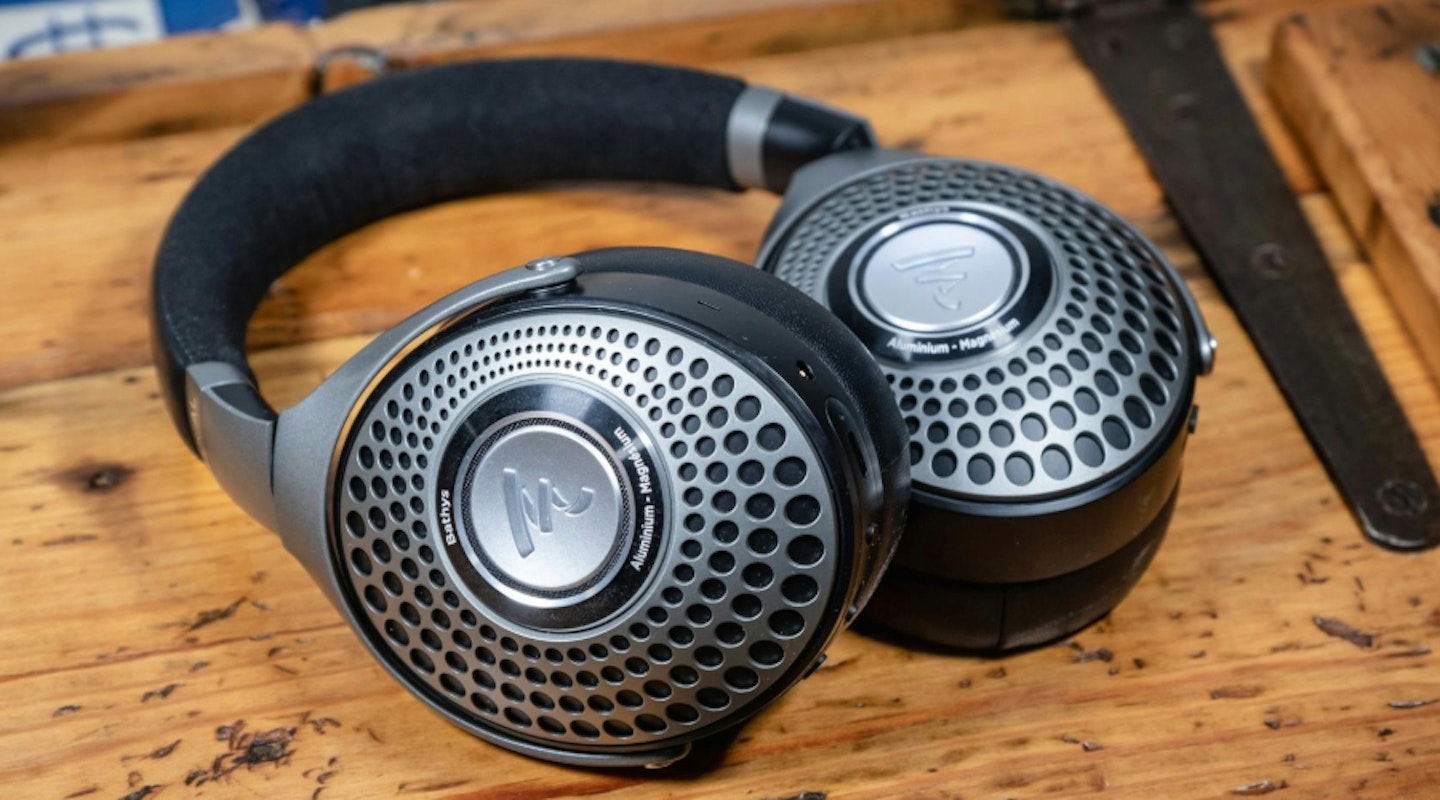 William Austin-Lobley/WTB
William Austin-Lobley/WTBpetertyson.co.uk
Focal has a reputation – it builds some of the best audio equipment available and it comes at a price. Its Bathys, though a budget headphone within the French brand's range, is a testament to this.
The look, while not to all tastes, is bold. The battery life is huge – 42 hours without ANC, though you’ll want to keep it on because it is fantastic. The Bluetooth audio is excellent, full of life, space and precision. Even the app is good.
Despite its five-star feature set, the biggest reason you will need £700 to grab the Bathys is they carry a high-quality DAC (Digital-to-Analogue Converter). When connected via USB-C, the Bathys’ DAC can take over from your device when decoding digital music because, frankly, it’s better at doing it than your laptop, tablet, or smartphone. The result is a vastly improved audio experience that allows your music to sound clearer, of a higher quality and louder. We’d recommend reading our hands-on review if you want to know more but suffice it to say the improvement isn’t slight – it’s a complete revolution.
While the Focal Bathys have the best audio we’ve trialled – and it's not even close – we can't in good conscience give them the top spot in this list. While the DAC does give incredible sound, this will only truly appeal to audiophiles who will be happy shelling out. Anyone looking for a solid set of everyday Bluetooth headphones will find better value for money with the Sony WH-1000XM5.
Our review: "Focal is known for its design sensibilities and audio prowess, and with the Bathys, it manages to combine these reputations into something rather special. With travellers in mind, the Bathys are comfortable over long periods, carrying up to 42 hours of battery and boasting a powerful Silent ANC mode, the headphones more than meet the mark. Long-haul flights and packed commuter trains are now peaceful havens. The audio quality via Bluetooth is excellent and expansive, full of energy and power. But it’s when the DAC is activated that you hear the reason the Bathys are such a high-end product."
Read our full Focal Bathys Hi-Fi Headphones review.
Pros
- Hi-fi quality audio on the go
- Excellent ANC
- Comfortable
Cons
- The wired connection required for DAC is only good when set up in one location
| Battery | Up to 43hrs, 30hrs with ANC |
| Bluetooth | 5.1 |
| Connections | Audio 3.5mm, USB-C DAC |
| Weight | 350g |
11.
Sony WH-1000XM4
Best value
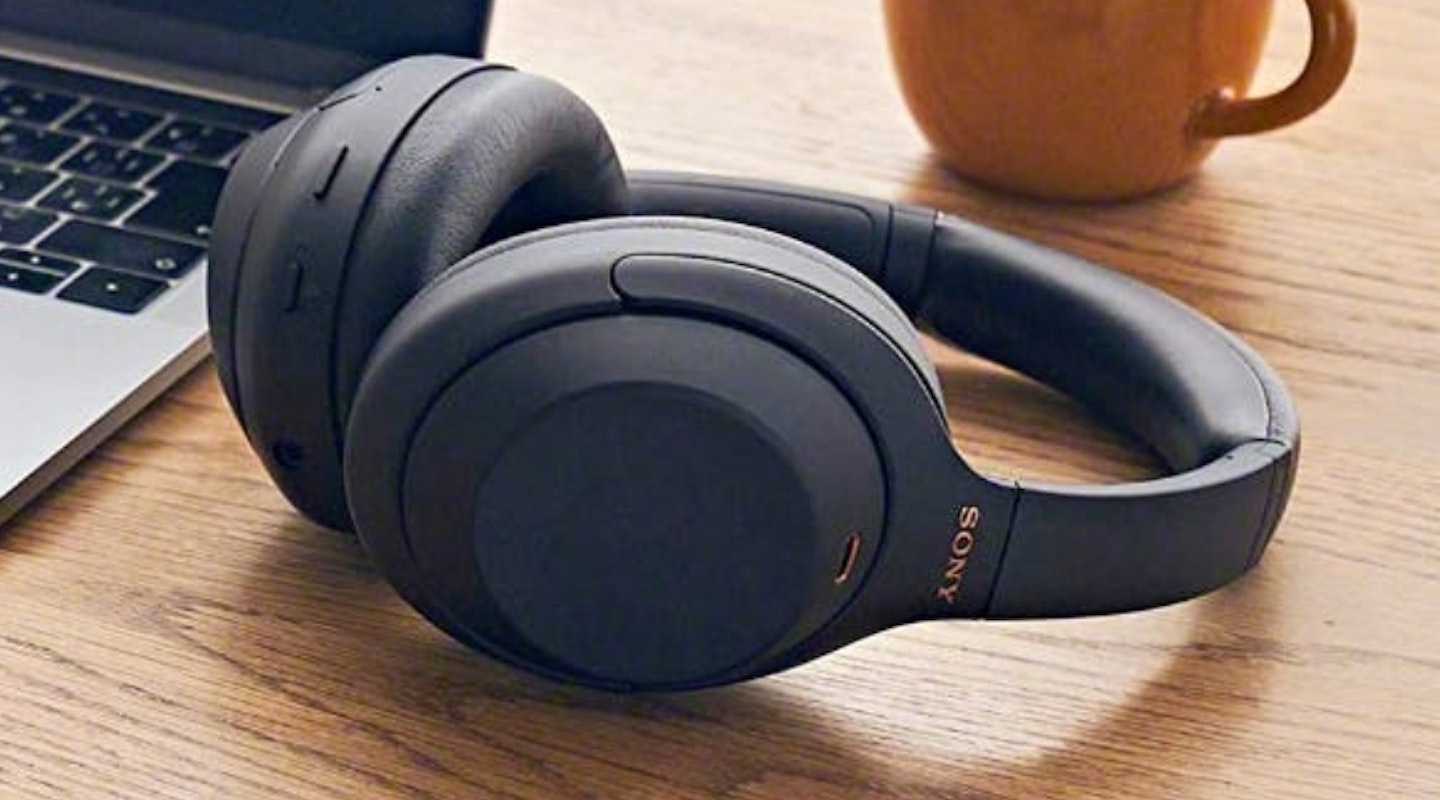 Sony
SonyA former world champion, the Sony WH-1000XM4 were king of the hill until its younger relative, the WH-1000XM5, usurped the position. But this doesn’t mean that the XM4 are old news – they still have more to offer than much of the contemporary field and offer a substantial saving over the XM5.
The audio performance is superb. In our test, we found the upscaling processor in the XM4 to be a wonderful touch, adding definition to all tracks and delivering great bass and clear highs. Comfortable to wear, the XM4s create a solid seal around the ear to help keep the world at bay, while the noise cancelling works to tone down any noise that might slip through significantly.
The Bluetooth connection is still very adept today, connecting to multiple devices, allowing you to listen to music from one device and take calls from another. Touch controls are present and correct, USB-C charging onboard, and speak-to-chat and smart assistance are supported.
Curtis Moldrich put these headphones through their paces and said: "Sony’s WH-1000XM3s were class-leading, and it’s no surprise to see the XM4s better them slightly in every area. They offer a good mixture of performance and price compared to the competition, so if you’re in the market for a pair of noise-cancelling headphones, these need to be towards the top of your list. However, Sony’s similarly impressive WF-1000XM4 earbuds offer a similar experience for less money and more versatility."
Read the full Sony WH-1000XM4 review.
Pros
- Great audio
- Great features
- Cheaper than the Sony WH-1000XM5
Cons
- A tad heavy
| Battery life | Up to 30hrs |
| Charging | USB-C, full charge in 3hrs |
| Connection | Bluetooth 5.0, Aux-in |
| Weight | 254g |
Best headphones for outdoor exercise
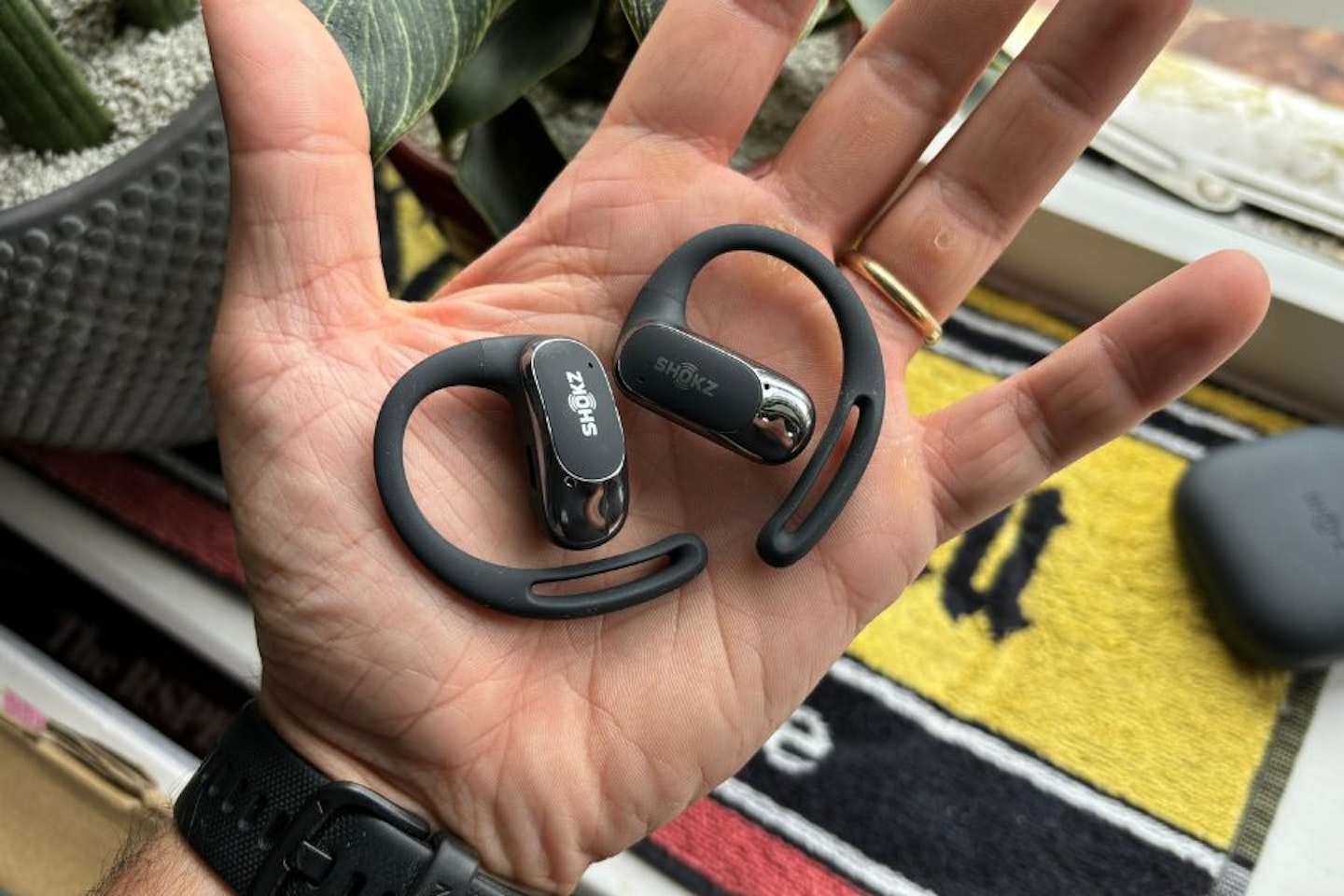
The Shokz OpenFit Air notably improves sound quality for open-ear headphones, balancing situational awareness with rich audio. While not matching the clarity and bass of in-ear or over-ear options like the Samsung Galaxy Buds or Sony XM5, the OpenFit Air impresses with its large driver surface and four adjustable EQ modes via the companion app. 'Standard' mode is versatile, 'Bass boost' enhances music richness, 'Vocals' highlights speech, and 'Treble boost' cuts through loud environments.
The open-ear design allows ambient sounds like traffic and conversation, which is essential for outdoor safety. Shokz's DirectPitch™ technology effectively reduces sound leakage. During our testing, leakage was minimal at moderate volumes.
In addition to the sound quality, the lightweight design and secure fit make it an excellent choice for active users. At £119, the OpenFit Air is a solid investment for those prioritising safety and audio quality in open-ear headphones.
Our review: "I used the headphones for running and cycling outdoors, as well as indoor yoga and in the office for calls and background music. I was impressed by the Shokz OpenFit Air headphones' exceptional fit, sound quality, and ease of use, making them perfect for outdoor exercise."
Read our full Shokz OpenFit Air review.
Pros
- Great sound that fights against the cliche of weak open-ear audio
- Comfortable and light, with a great grip that holds on during intense exercise
- Well-implemented touch controls
Cons
- Build quality is a bar below typical Shokz fare
- Six hours of battery in earphones
13.
Sony LinkBuds
Best for comfort
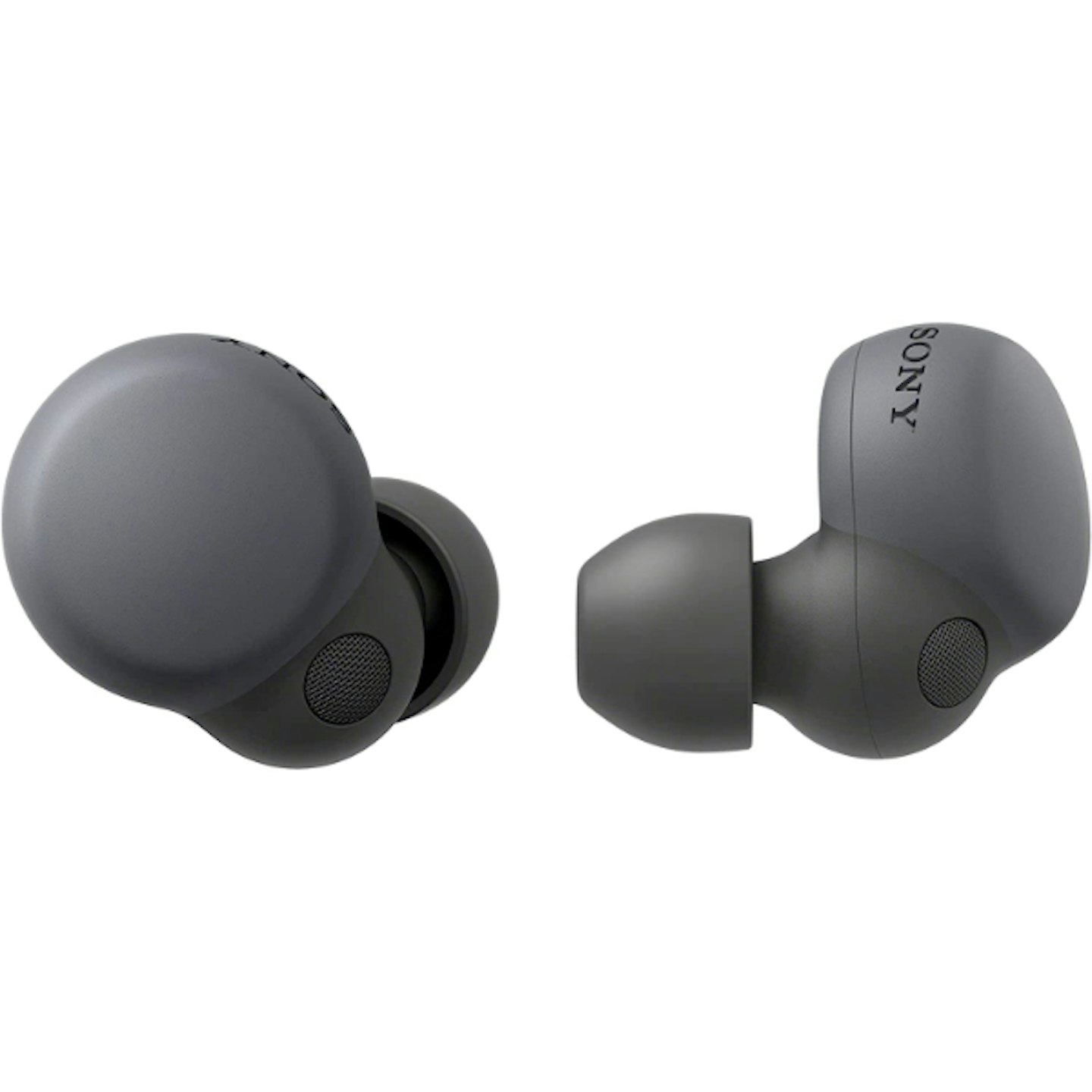
Typically, bigger and heavier headphones are considered the place to head for excellent audio quality. While this rings true in many situations, it makes finding something counter to this all the more exciting. Here, with the LinkBuds S, Sony has managed to provide awesome audio quality in a shell that weighs a mere 4.4g.
This lightweight design and smart ergonomics make the LinkBuds S super comfortable. Days in the office and hours in the gym aren't hindered by discomfort. And the battery does a fair job of helping them keep up too.
In our LinkBuds review, we concluded that though Sony does provide better audio on other items - which are typically more expensive - the LinkBuds S balances weight, sound and cost to deliver a package that is hard to beat.
Here's more about what we thought: "If you value comfort above overall quality, and you’re looking for something to take to the gym or wear all day, then the LinkBuds S are worth a look. Sure, they won’t deliver the overall quality of Sony’s flagship in-ears, but they get pretty close and come with their own, unique set of strengths to boot." Read more about the Sony LinkBuds in the full review.
Pros
- Comfortable for long periods
- Affordable
- Good sound
Cons
- The WF-1000XM4 sound better
| Battery life: | Up to 6hrs, 14hrs in case |
| Charging: | USB-C |
| Connection: | Bluetooth |
| Weight: | 4.4g (per bud) |
Best gaming headphones
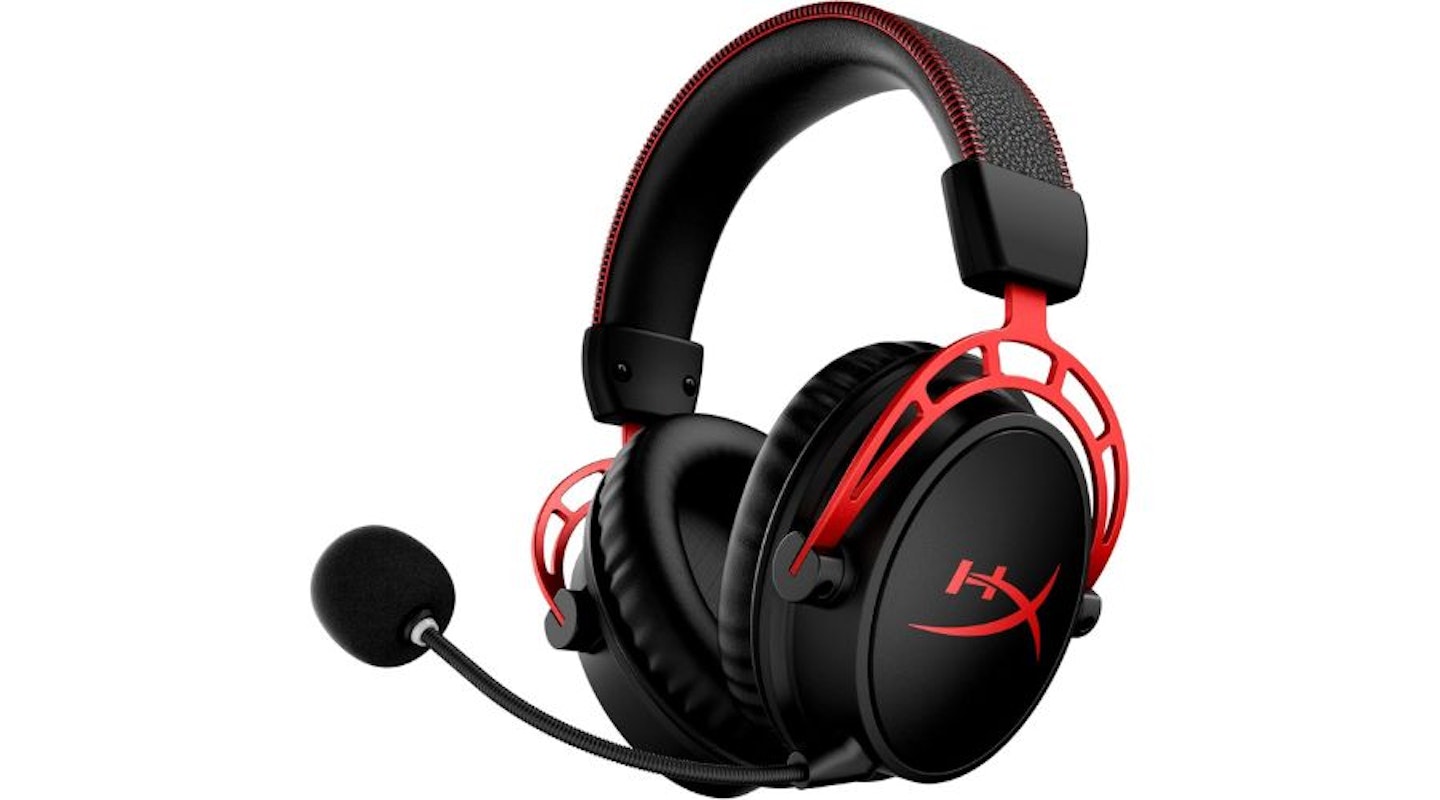 HyperX
HyperXWhen it comes to gaming headsets, our current favourite pair is the HyperX Cloud Alpha Wireless gaming headset. Designed specifically with gaming in mind, these cans are relatively affordable, offer good quality audio that's great for gaming and listening to music, and there are no cables to trip over (although there is also a wired set of HyperX Cloud Alpha headphones, too). But what really sets these apart is the battery life, which offers up to a frankly ludicrous 300 hours between charges (at 50 per cent volume). That's not a typo.
There are some differences in sound between these and the wired version. But for gamers, directional sound (crucial in many games) is excellent thanks to spatial audio. Sound in general is crisp and clear, with a dual chamber driver system helping to tune mids and highs separately from the bassier elements. It's not perhaps as loud as some alternatives. But then again, who needs tinnitus?
Given that you could be wearing these for long gaming sessions, you'll be pleased to know that they are designed to be comfortable. The aluminium frame helps keep weight down while remaining durable, and memory foam and breathable leatherette is designed to keep you comfy.
The one minor disappointment is a slightly underwhelming mic. It's not terrible, and benefits from noise cancellation. But there are better mics out there. That aside, these are a great pair of gaming headphones that outlast everything else out there.
Pros
- Reliable sound
- Excellent durability
- Unbelievable battery life
Cons
- The mic isn't the best
| Battery life | Up to 300 hrs |
| Charging: | USB-C |
| Connection: | 2.4GHz wireless |
| Weight: | 335g with mic |
What to look for when buying headphones
While we've ranked the best headphones above, this doesn’t mean that every single pair is going to be right for you. It all depends on what you want to use your new headphones for. Here are a few pointers for common uses that we like to consider when looking at headphones:
Exercise
Probably the most demanding task to put your headphones through. They've got to be comfortable and firmly fitted, sweat-resistant and carry some touch controls for easy pause/play. Not only that, but the sound quality must pump you up, and some noise cancelling will help silence other gym-goers and help you lock into the session.
If you're an outdoor runner or cyclist, you'll need to consider a few more things – most notably situational awareness to help keep yourself and others safe. Hear-through features or open-ear designs are best here, along with increased water resistance in case you get caught in a downpour.
Office and commuting
For office work and commuting, you'll need headphones with good battery life and competent noise cancelling. In case the battery does run low, quick recharging is a welcome feature too – usually supplied by USB-C.
Think about additional features that might be of use too. Lift-to-speak, which pauses music when you lift an earcup, or tap-to-pause, which instantly pauses music, will help you have quick conversations with those around you, or listen to platform announcements.
Entertainment
Whether you're on the train, in the office or resting in your front room, if you want to use your headphones for entertainment, there are some things to look out for. A low-latency, high-quality Bluetooth connection will make sure that audio is in sync with what’s happening on screen, while a good surround-sound simulation will provide you with a 360-degree audio experience, immersing you in the action. This is all true whether you are gaming or streaming a TV show to your smartphone.
Earbuds, earphones and headphones: What's the difference?
Though the term 'headphones' is widely used as a catch-all for all head-based audio gadgets, there are technical differences between headphones, earbuds and earphones.
Headphones are the largest of the three – they are the ones that sit over your ears, connected by the over-head band – the Sony WH-1000XM5 is an example of headphones, and the ones we've ranked the best of the bunch. Earphones sit in the ear and have a protruding stalk, like the Apple AirPods. Earbuds are the smallest of the three, sitting in the ear and using the ear's anatomy to hold itself in place – the Samsung Galaxy Buds2 Pro are earbuds and take the top spot for us.
Audio jargon buster
True Wireless:
True wireless refers to earphones that are not connected with wires, in addition to offering a wireless connection to the audio device. Most wireless earphones and earbuds are true wireless.
Latency:
Latency is the delay that occurs between an audio event happening on a device and the time it takes to transmit to your headphones and be played so you can hear it. The smaller the latency, the better – especially when you are watching entertainment where audio and image need to be synchronised. Latency is measured in milliseconds – MS.
Bluetooth:
Bluetooth is a wireless connection method that allows devices within a given proximity to communicate. There are different generations of Bluetooth connection available, with each new iteration offering quicker and more reliable connections. Currently, we consider Bluetooth 5.0 and above to be a great choice.
Noise-cancelling and ANC:
As the name suggests, noise-cancelling is a feature built into some headphones and earphones to reduce ambient surround from the surrounding area, like people chatting in cafes or traffic on the walk to work.
A microphone in the headset listens to the surroundings and creates a soundwave which is the exact opposite and sends it through with audio content, cancelling the noise out without the listener even noticing. Noise-cancelling can often be toggled on and off for personal preference and safety reasons.
ANC is an abbreviation of Active Noise Cancelling, another phrase used to describe the above process.
Drivers:
A driver is a device inside an audio speaker, be it a headphone or external speaker, that converts an electrical signal into sound. Larger drivers tend to be able to deliver a more powerful sound with greater accuracy. Drivers are talked about in terms of their diameter, which is measured in millimetres.
Earphones and earbuds tend to have drivers between 8mm and 15mm, while headphones have drivers between the size of 20mm and 50mm. It used to be the case that this difference in size resulted in superior audio from headphones, but increasingly earbuds and earphones are overtaking their larger cousins.
Frequency response:
Frequency response measures the audible frequencies a driver can produce. 20Hz - 20KHz is ideal, as it matches the average human audio spectrum. Anything over and above this range is a good indicator of a quality driver, though the lowest and highest frequencies will likely go unheard.
Why should you trust us?
At What's The Best, our mission is to provide accurate and reliable reviews, ensuring our readers receive honest and transparent information about the best technology products available. Anything less would undermine our commitment to being a trusted source of unbiased product information.
Our dedicated in-house writing team comprises experts with extensive experience and a genuine passion for technology. Collectively, we have spent decades testing and writing about tech, leveraging our expertise in all our articles, advice pieces and reviews.
We maintain complete editorial independence and do not accept payment for product reviews. Our writers have full control over their content, ensuring that products are selected based solely on the needs of our readers. While we may earn commissions or other compensation from links on our website, this never affects our product choices. These links enable us to continue offering valuable consumer advice, without compromising the integrity of our reviews.
William Austin-Lobley is the Editor for What's The Best. Here, he oversees, curates and researches listicles and reviews as many products as his home office can handle.
He has spent nearly five years writing about tech, audio, outdoors and fitness and has reviewed everything from smartphones to ice baths. In addition, he's well-versed in sniffing out the best deals and savings the internet offers.
When not at his desk writing, reviewing or deal-hunting, he'll be relaxing with Japanese crime novels, bingeing some classic anime, strolling the countryside or at the gym listening to the heaviest metal Spotify has to offer.
Subscribe to the What's The Best Newsletter to keep up to date with more of the latest reviews and recommendations from the What's The Best team.

